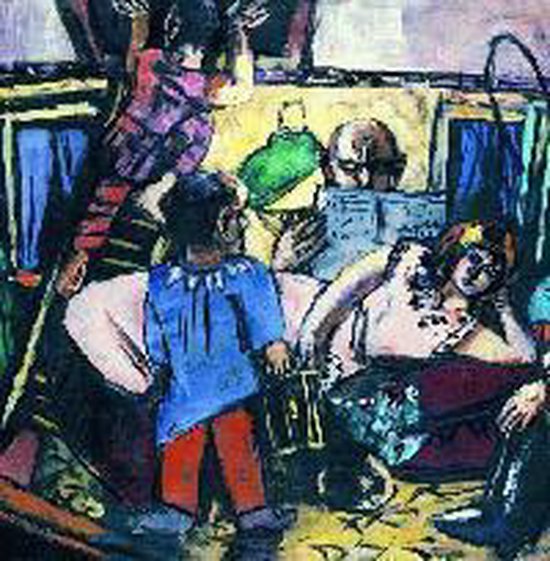
Max Beckmann
This generously illustrated and comprehensive book focuses on a decisive decade in Max Beckmanns career as one of the leading figurative painters of the twentieth century. This publication will provide insight into a critical period in the artists development and the accomplishments that earned him such high esteem.
Beckmanns brief but profoundly jarring service as a medical orderly during World War I led to a nervous breakdown. He assimilated his experiences and incorporated recent and radical developments in art, such as Cubism and Expressionism, leading him to advance new pictorial conceptions beginning in 1915.
To many of his contemporaries, the work Beckmann created between 1917 and 1925 placed him at the forefront of the latest developments in representational painting. In 1925, Beckmanns celebrated status was confirmed by his prominence in the groundbreaking Neue Sachlichkeit (New Objectivity) exhibition in Mannheim, although he later distanced himself from the term.
This book will situate Beckmann artistically and historically. Essays by both established experts and emerging scholars investigate the seminal energy found in the work he created between 1915 to 1925 - a period to which the artist himself repeatedly returned over the course of his lifetime.
The self-referential aspect of Beckmanns output is key to understanding his progression as an artist, which comes more clearly into focus via an analysis of these critical early years.
Beckmanns brief but profoundly jarring service as a medical orderly during World War I led to a nervous breakdown. He assimilated his experiences and incorporated recent and radical developments in art, such as Cubism and Expressionism, leading him to advance new pictorial conceptions beginning in 1915.
To many of his contemporaries, the work Beckmann created between 1917 and 1925 placed him at the forefront of the latest developments in representational painting. In 1925, Beckmanns celebrated status was confirmed by his prominence in the groundbreaking Neue Sachlichkeit (New Objectivity) exhibition in Mannheim, although he later distanced himself from the term.
This book will situate Beckmann artistically and historically. Essays by both established experts and emerging scholars investigate the seminal energy found in the work he created between 1915 to 1925 - a period to which the artist himself repeatedly returned over the course of his lifetime.
The self-referential aspect of Beckmanns output is key to understanding his progression as an artist, which comes more clearly into focus via an analysis of these critical early years.
| Auteur | | Olaf Peters |
| Taal | | Engels |
| Type | | Hardcover |
| Categorie | | Kunst & Fotografie |





